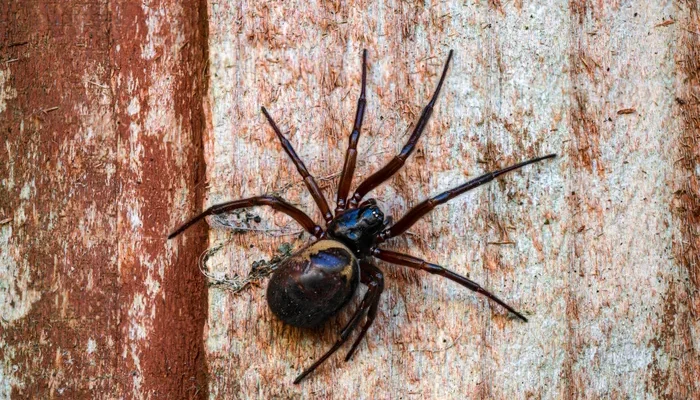The spider armada is upon us
Giant spiders with a ‘wasp sting’ bite are set to invade the UK in the coming weeks, experts have warned, as mating season begins.
The spider known as a false widow is expecting to start making its way into UK homes following warm and wet conditions this summer that have provided the ideal conditions for the arachnids to start reproducing.
The eight-legged creatures are relatives of the infamous and deadly black widow and although the false widow is not as dangerous, its bite still packs a nasty punch.
Its venom cause painful burns and swelling potentially leading to fever.
The false widow appears normally in early September in homes and can persist until mid-October.
Following on from this time the spiders become more and more scarce indoors.
Female spiders across the genus are known to live in the same place their whole lives while male spiders are constantly roaming.
During the mating season the males appear and search for the females, with many residing in houses, meaning their number in dwellings is likely to double.
All spiders in the UK can bite, however only 12 can hurt humans with the false widow spider being one of these.
Previously, the British Pest Control Association (BCPA) has advised people to avoid coming into contact with the false widow, but also not to panic if they spot one at home.
The eight-limbed arthropods are not aggressive, however may bite if provoked through accidental or purposeful contact.
The BPCA said: “Requests for False Widow pest control call-outs tend to peak in October.
“The spiders increase in numbers during warmer months, but in late summer and autumn they may become particularly conspicuous as the males wander more extensively in search of a mate.
“False Widow spiders are not aggressive and will not launch an unprovoked attack on people.”
Where a spider is, a web is not too far away or vice versa.
A false widow web is usually spotted at least 1.5m off the ground and does not resemble a neatly woven web like an orb weaver spider, but instead looks like a random tangle of loose threads that sometimes hangs like a hammock.
One corner will have a tube of silk leading into a crevice where the spider will hide itself away during the day.
Webs are normally found in angular places that allow effective web construction such as in the vicinity of windows, door frames, eaves (roof edges), porches and conservatories.
The venomous bite of a false widow has been compared to a wasp sting, however serious issues from a spider bite are more likely from a secondary infection rather than the actually bite.
The BCPA said: “If you’re concerned about spiders in your home, seek advice from a pest management professional.
“You can remove a spider from your home by putting a small carton or glass over it and sliding a piece of card between the opening and the surface. You can also use a vacuum cleaner to remove spiders and their webs if you don’t want to get too close!”
There are plenty of actions you can take to keep the incoming spider armada out of your home if you haven’t already.
One of the key measures is to keep a clean house as spiders love dark spaces where they can hide while it is also important to open blinds and curtains in the day to let light in as the arachnids prefer the dark.
Physical measures such as spraying corners with essential oils can be effective as spiders feel with their legs leading them to be put off from leaving their lairs while they equally dislike lines of chalk which can act as a physical barrier.
If you want to be more old school you can always put a conker in the corners of your rooms, however there is no conclusive evidence to suggest this works!



